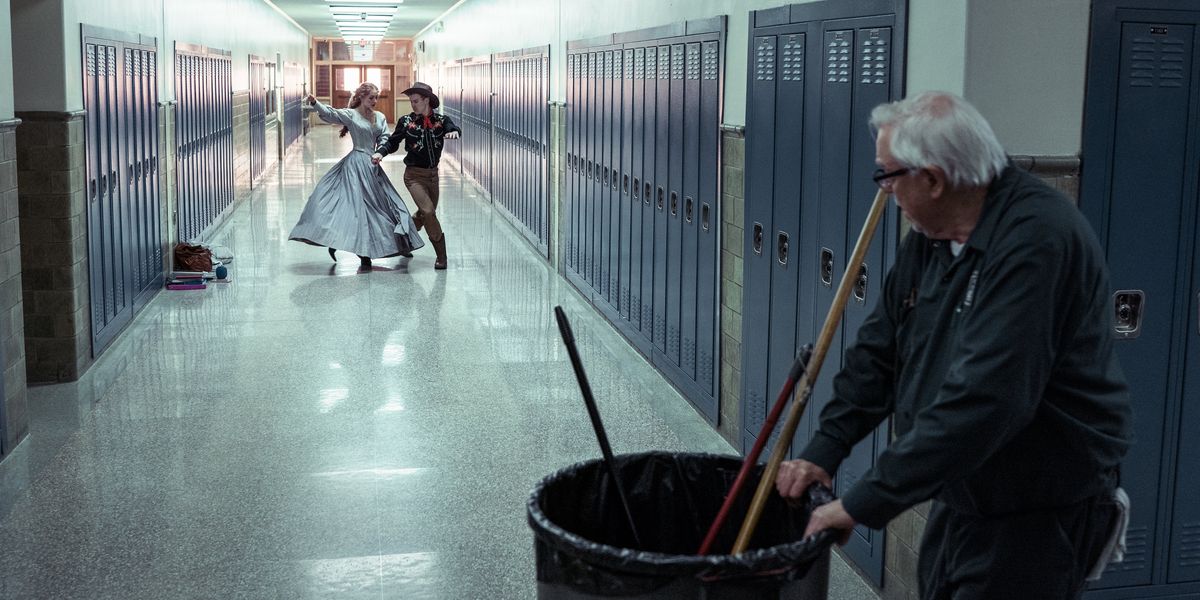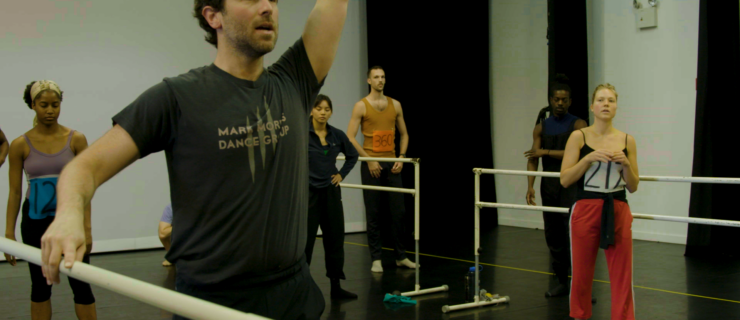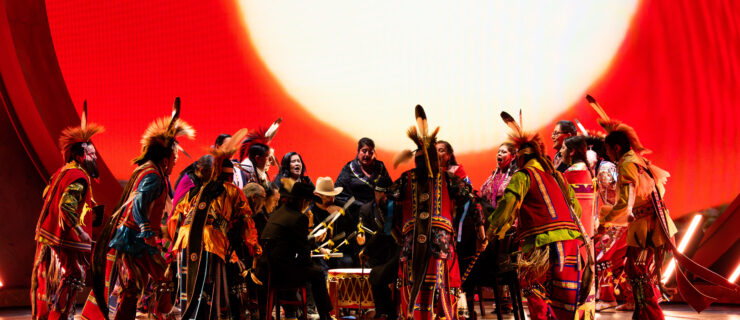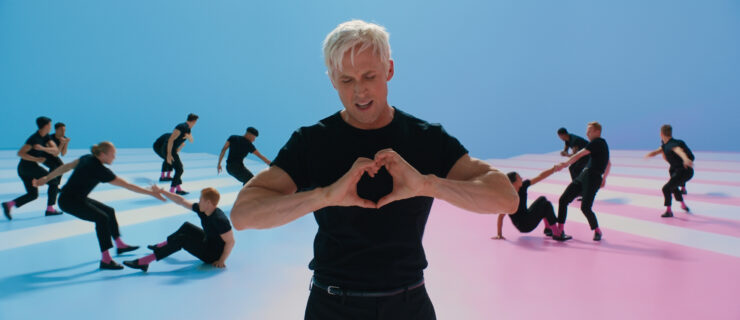Inside Peter Walker's Dance Scene in I'm Thinking of Ending Things
Based on the title, Netflix’s new film I’m Thinking of Ending Things sounds like it could be a typical breakup movie. Peel back one layer (there are many), and you’ll find quite the opposite: The Charlie Kaufman–directed thriller drama, based on the book of the same name, follows a young woman (Jessie Buckley) as she meets the parents of her boyfriend, Jake (Jesse Plemons). Soon, reality unravels, as the characters and their backgrounds keep shifting—even her name isn’t a sure thing. In the midst of wondering who she is, if Jake can hear her thoughts, and what is real and what is not, there’s an Oklahoma!-inspired dance scene, choreographed by New York City Ballet soloist Peter Walker and performed by fellow soloist Unity Phelan and Broadway vet Ryan Steele.
“At face value, it’s a lovely dream ballet sequence,” says Walker. “But there’s a lot of character layers and interactions that are specific and directed that I almost hesitate to talk about, because so much of the film, especially the end, is meant to be left up for interpretation.”
During the process, Walker says that he and Kaufman investigated those gray areas. “There was a lot of talk about what this means or who she is or their actual relationship versus their perceived relationship and what it represents. That was really helpful when you’re making something abstract like dance.”
We caught up with Walker to discuss his first feature film experience and collaborating with Kaufman.
How he got the gig
Kaufman was searching for a choreographer for the dance scene he’d written, and Walker’s name came up in discussion. “I think the thing that got me involved was a video online from [NYCB] of me talking about my last ballet at the company, dance odyssey. It’s one of those Anatomy of a Dance videos, and I did a voiceover about the choreography,” says Walker.
“It’s really kind of lucky, I’d say, more than anything because I’m not an established choreographer in the film world, by any means. I think what tipped it over the edge was that it was in the style they were looking for.”
The Justin Peck litmus test
With Kaufman’s approval, Walker chose Phelan and Steele for the dance sequence. They don’t play body doubles for the young woman and Jake in the movie. Instead, they’re more akin to dream ballet versions of the two main characters. One consideration: “If we throw a red wig on Unity, will she look like Jessie [Buckley] enough that we can get away with it?” (She does.)
Though Walker hadn’t worked with Steele previously, he knew of him through Justin Peck’s Carousel choreography for Broadway. “I’d seen him do Justin’s stuff, so I knew he could do what we were trying to make. That was basically all I needed—Justin’s choreography is a good litmus test because it’s a good crossover between Broadway and ballet.”
Mining the script
The script itself provided a blueprint for the dance scene. “Charlie wrote the whole scene, basically without saying what steps to do. It’s really kind of brilliant,” says Walker, mentioning how it hews closely to Oklahoma!‘s famous dream ballet.
“The dancers replace the actors, and there’s a really strange moment where the light goes down on the girl and comes up on the dancer, and they run towards each other—that’s literally in the script. The whole thing was spelled out before we even got into the studio, which is quite liberating as a choreographer—to be able to deliver exactly what they need as opposed to playing the guessing game and having to present multiple options. When we got down to work, I was able to be really efficient and directive in terms of how it needed to feel and what we wanted to show through actual dance content.”
Making the costumes danceable
Phelan and Steele’s wardrobe mirrors that of the two main actors, and that initially posed a challenge, says Walker. Because it’s set in winter, their bulky outerwear would have concealed much of the choreography. “You couldn’t see their limbs, so I was working with Melissa Toth, the costume designer, and asking, “Can we trim these down somehow to make them more danceable?’ ”
Toth was no stranger to dance, having just worked on “Fosse/Verdon.” Ultimately, Kaufman crafted a quirky solution: When the dancers appear, they hand off their outer layers to the actors. “It’s sort of a weird, funny moment that was born of the practicality of wanting to be able to see the dancing,” says Walker.
This lift or that?
“The great thing about Charlie is if he’s collaborating with somebody, he really trusts that person to do their job,” says Walker. “I would say, ‘Do you like this lift better or this lift?’ ” Sometimes he’d have a preference, but often, Walker says, Kaufman deferred to him. “We had the creative trust to make something that would be choreographically sound and respected in the dance community and the film community.”
Film versus stage
“When you’re given creative carte blanche and you can do whatever you want, that can be overwhelming,” says Walker of choreographing for the ballet stage. “There’s a certain liberation in doing a job that is set out for you”—à la I’m Thinking of Ending Things—”versus being responsible for answering the who, what, when, where, why of the piece before you even get to the physical creation.”
Walker, who works on his own short dance films with NYCB’s Emily Kikta, says he has an affinity for the medium. “You get to show things you wouldn’t be able to onstage. You can really play with perspective. That’s one thing that we talk about a lot with dance on camera: In our theater, we have almost 3,000 different perspectives. No matter what you do on that stage, everyone’s going to view it slightly differently. When you’re dancing for a camera, you have one perspective that you get to control. You can show 3,000 people the exact same thing and tell them exactly where to look. And that can be really compelling if that tool is used to its fullest potential.”
Might we see more of Walker’s work on the big screen in the future? “I’d love to work for more films,” he says, “and get ballet to be a little more visible in this realm.” Seeing a non-commercialized version of ballet in film is rare, he says. “So big props to Charlie for doing that.”




